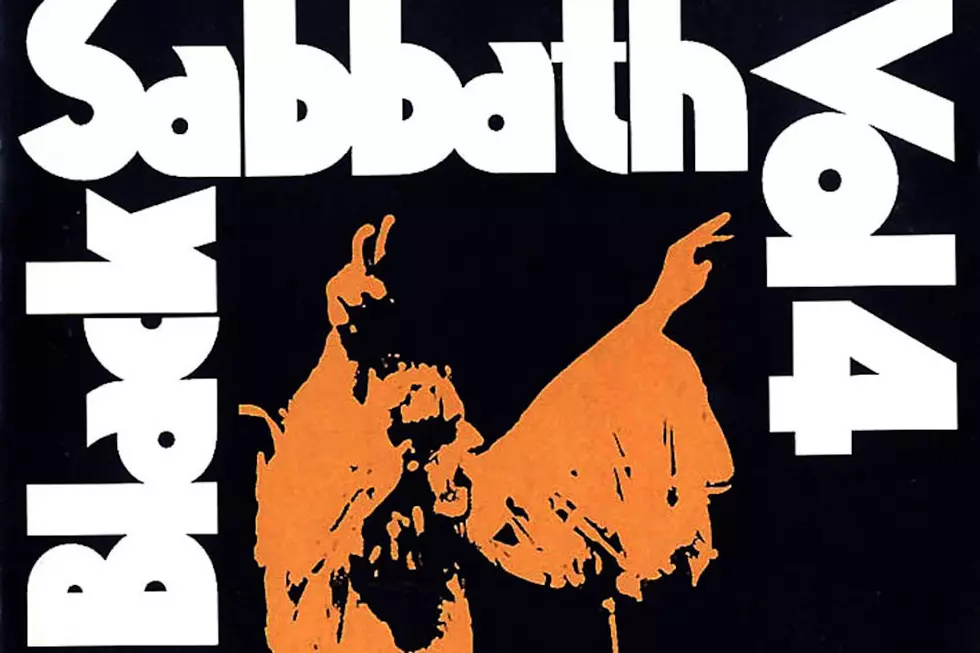
How Black Sabbath Managed to Release ‘Vol. 4′ Amid Problems
Black Sabbath were reaching beyond their own musical roots by the time they recorded their fourth album in 1972, coming up with an amalgam of classic heavy riffing, a growing sense of melody and even some touches of progressive rock. The album endures as a classic today – even though it was almost derailed by the band's growing substance abuse.
Sabbath's previous album, Master of Reality, had seen the band begin to experiment musically with tracks like "Embryo," "Orchid" and "Solitude," and that approach had succeeded, resulting in a double platinum album. The band were keen to continue in that vein with their next outing, but as the musicians settled in Los Angeles to work at the Record Plant, the project rapidly began to run into trouble as the group's growing reliance on narcotics found its way into the recording sessions.
"L.A. was a real distraction for us, and that album ended up sounding a bit strange," guitarist Tony Iommi admitted to Guitar World magazine. "The experimental stage we had begun with Master of Reality continued with Vol. 4, and we were trying to widen our sound and break out of the bag everyone had put us into."
Black Sabbath had never been shy about advertising their fondness for drugs, even recording an homage to marijuana titled "Sweet Leaf" on the previous LP. But the musicians had taken a turn into cocaine by 1972, and the effects of the drug informed many aspects of the new album, especially in the lyrics.
Many of the album's lyrics seemingly derive from the paranoid delusions of cocaine abuse, while the Sabbath classic "Snowblind" is an open celebration of the drug that the group intended as the title song of the album until their nervous record company intervened.
Listen to Black Sabbath's 'Snowblind'
Even so, the group succeeded at expanding their musical parameters, intermingling classic riffage like "Snowblind" and "St. Vitus Dance" with longer, more complicated songs like "Tomorrow's Dream" and "Cornucopia." "FX" was little more than an abstract soundscape, while the acoustic "Laguna Sunrise" showcased a gentler side of Iommi that wouldn't have been out of place as a B-side from In the Court of the Crimson King.
One of the most dramatic departures was "Changes," a piano-driven gospel-blues lament that Ozzy Osbourne would later recall as a favorite in his autobiography. "Supernaut" featured an Iommi riff so classic that artists as diverse as Frank Zappa and Led Zeppelin drummer John Bonham would later name it as a favorite.
Osbourne delivered some of the standout vocal performances of his career on Vol. 4, singing with a range and clarity throughout that surpassed everything he had previously done. But some tracks suffered from mixing issues, with both the band members and their technical support team dealing with drug issues.
Drummer Bill Ward feared he would lose his job over his drug use after he struggled to record "Cornucopia," which featured some challenging time changes. "I hated the song; there were some patterns that were just horrible," he said in The Story of Black Sabbath: Wheels of Confusion. "I nailed it in the end, but the reaction I got was the cold shoulder from everybody. It was like, 'Well, just go home, you're not being of any use right now.' I felt like I'd blown it, I was about to get fired."
Released on Sept. 25, 1972, Vol. 4 went gold in less than a month and was later certified platinum. Critics were typically dismissive of the album, though the critical community would later reverse itself dramatically and hail Black Sabbath as the musical pioneers they really were. Vol. 4 peaked at No. 13 in the U.S., anyway, while reaching No. 8 in the U.K.
Black Sabbath Albums Ranked
10 Most Important Dio Historical Moments
More From Ultimate Classic Rock









